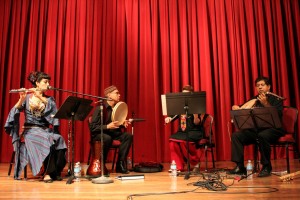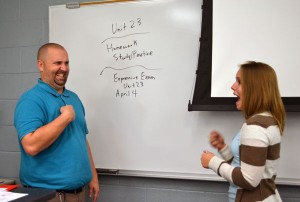Students, staff and alumni came together for free beer, art and food at last week’s second monthly First Thursdays social at the Blaffer Art Museum.
Held on the first Thursday of every month, the event is purely social where all students can come to see the museum and socialize.
“Basically, the point of this event is just to let students know that they can come and be here, and this is their museum on campus,” said Blaffer Director of External Relations Matt Johns.
“It’s strictly a social event, just to get students something to do on Thursday night when we’re open late and engage with the art that’s here and just hang out, have fun.”
First Thursdays was started in March by Johns as a way to bring more students to the museum during its new Thursday hours. The event included music provided by Coog Radio and free beer provided by the local craft brewery, Karbach Brewing Co.
“I hear about a lot of exhibits and events here, and I’ve always wanted to come but never quite knew where it was,” said alumnus Tim Richardson.
“People need culture; they definitely do. People need to see art. I think it’s fun … and I’m loving the atmosphere,” he said.
The event occurred during the 35th UH School of Art Master of Fine Arts Thesis Exhibition, which began on March 30 and will run until April 13. These pieces dominated the gallery and were a major source of discussion.
“(Having my pieces on display) feels good,” said Jasleen Sarai, a Masters in Fine Arts student with several pieces on display in the exhibition.
“(But) it doesn’t feel as awesome as I thought because when you make (something), you’re doing it for a certain reason. I guess the stuff that I’m doing is not really for showing. (It’s cool to) have something on display,” she said.
Blaffer holds numerous events throughout the year, with upcoming events including “The Eye, Ocular Diseases, and Visual Arts,” a lecture that will be held today by Dr. Richard H. Fish, deputy chairman of the Department of Ophthalmology at The Methodist Hospital and physician member of Methodist’s Center for Performing Arts Medicine. The lecture will discuss common eye diseases and how artists who suffer from those diseases incorporate them into their art.
arts@thedailycougar.com






